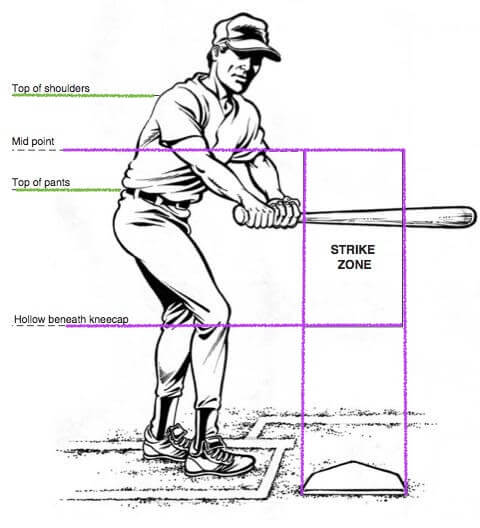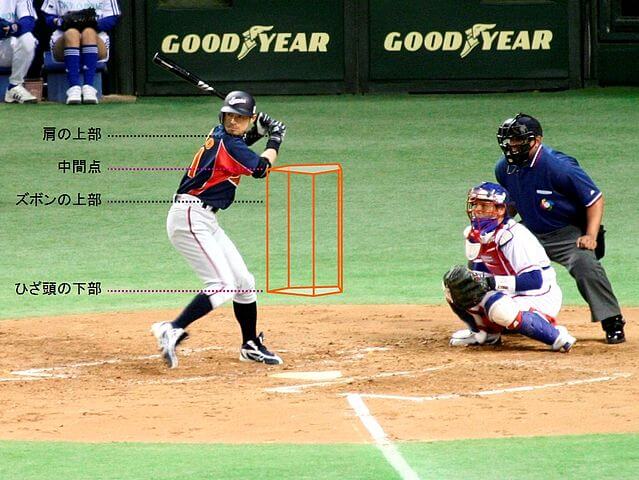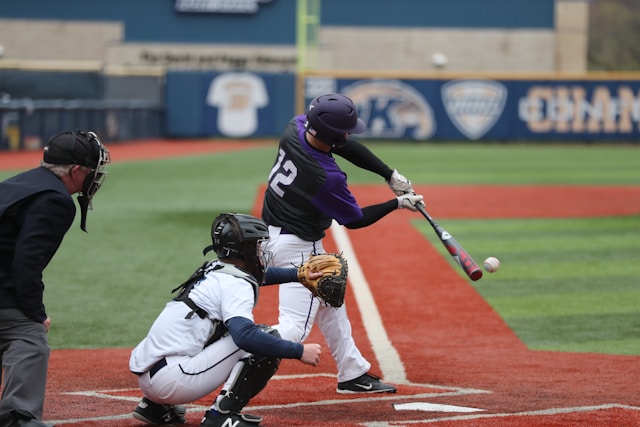Photo by Chris Chow on Unsplash
Definition of Strike Zone Size


| Strike Zone | Definition |
|---|---|
| Highest Point | The midline between the shoulder and waist of the batter |
| Lowest Point | The position of the batter’s knees |
| Leftmost | To the left of the home plate |
| Rightmost | To the right of the home plate |
Why do umpires have different strike zones?
| Reason | Explanation |
|---|---|
| Differences in Player Height and Body Type | - The highest point and lowest point of the strike zone will vary in height according to the player’s height and body type, as the positions of the shoulder, waist, and knees differ among players of different heights and body types.- Shorter players may have a narrower range between the highest point and lowest point, resulting in a smaller strike zone height. |
| Subjectivity of Umpires | - Each umpire will adjust the strike zone based on the batter’s height and body type. - Different umpires may have different understandings of the positions of the shoulder, waist, and knees for players of varying heights and body types.- Some umpires may be more lenient or strict in certain areas, leading to the ‘morphing’ strike zone situation |
Why can’t the strike zone be a fixed size and must be determined according to the player’s height and body type?
| Reason | Explanation |
|---|---|
| Individual Differences | - If the strike zone is fixed at a standard size, it may be unfair to some players. - Shorter players may find their strike zone too high.- Taller players may feel that the strike zone is too low. |
| Fairness in Competition | - The strike zone is determined based on the batter’s stance when preparing to swing. - Umpires need to consider the batter’s actual situation to ensure that every batter has a fair opportunity within a reasonable range. - If the strike zone is fixed, it may put some batters at a disadvantage when facing pitchers. |
| Subjective Judgment of Umpires | - Umpires are responsible for determining the strike zone during the game, and they will judge based on the batter’s height and stance. - This subjectivity means that each umpire may make different judgments in the same situation, thus, a flexible strike zone can better reflect the characteristics and needs of each batter. |
| Impact on Game Results | - Some pitchers may be unable to effectively throw their best pitches due to a fixed strike zone, thus changing the course of the game. - A fixed strike zone will not reflect the true competition between the pitcher and the batter. |
Determining the strike zone based on each player’s height and body type not only ensures fairness in competition but also better adapts to the needs of different batters, thereby enhancing the overall quality of the game.
Determining Balls and Strikes
Determining a Strike
| Definition | Is it in the Strike Zone? | Explanation |
|---|---|---|
| Swing and Miss | O / X | Regardless of whether it is in the strike zone, a swing and miss will be ruled a strike. |
| No Swing | O | If the ball enters the strike zone, not swinging will also be ruled a strike. |
| Foul Ball | O / X | - Regardless of whether it is in the strike zone, hitting the ball into foul territory will be ruled a strike. - However, if a foul ball is hit after 2 strikes, it does not count as an out. |
Determining a Ball
When a batter accumulates 4 balls, he will be walked to first base.
| Definition | Is it in the Strike Zone? | Explanation |
|---|---|---|
| No Swing | X | If the ball does not enter the strike zone and the batter does not swing, it will be ruled a ball. |
Special Strike Situations
| Situation | Explanation |
|---|---|
| Foul ball caused by a bunt after 2 strikes | Considered the 3rd strike, the batter is out, and runners on base cannot advance. |
| If a pitch hits the batter, but the batter is ruled to have swung by the umpire | Then regardless of the ball count, it is recorded as 1 strike, and not a hit by pitch. |
| If the batter fails to enter the batter’s box in time or refuses to do so while the umpire calls for the game to proceed | Then the pitch thrown by the pitcher, regardless of whether it actually falls within the strike zone, must be declared a strike by the umpire. |
Why not use an electronic strike zone for judgment?
Advantages of Electronic Strike Zone
| Advantage | Explanation |
|---|---|
| Consistency | The electronic strike zone provides a standardized judgment, reducing variations caused by umpire subjectivity, allowing for more consistent rulings of strikes and balls. |
| Reducing Controversy | Through technological assistance, it can reduce controversies arising from improper umpire judgments, making the game fairer. |
| Reducing Pressure on Umpires | Umpires can focus on other game management tasks without bearing the pressure of all balls and strikes judgments. |
| Data Analysis | The electronic system can provide detailed data analysis, helping coaches and players improve strategies. |
Disadvantages of Electronic Strike Zone
| Disadvantage | Explanation |
|---|---|
| Technical Limitations | The electronic system may not accurately identify certain edge cases: - A vertical breaking ball that grazes the strike zone and then lands. - A horizontal breaking ball that grazes the edge of the strike zone and then moves into the right-handed batter’s box. In such cases, even if it is a strike, most umpires would not rule it as a strike. |
| Dependency Issues | Over-reliance on the electronic system may cause umpires to lose flexibility and judgment ability, potentially affecting the flow of the game. |
| Imperfect Results | Even with an electronic system, errors may occur, such as in certain situations being ruled a strike when it should actually be a ball. |
The electronic strike zone has the potential to provide consistency and reduce controversy, but it also faces challenges such as adaptability, technical limitations, and dependency. Balancing these advantages and disadvantages will be key in future baseball games.
